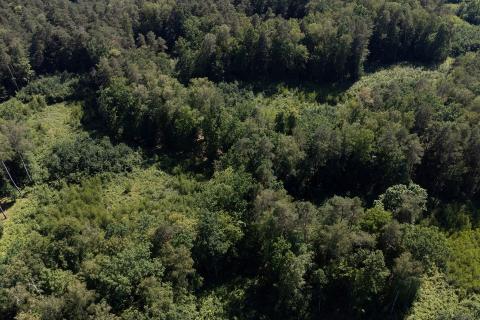
After 24 years of extinction, a bird known as “dusky tetraka”, a small passerine species living only in Madagascar, has once again resurfaced, bringing some relief to the scientific community.
The yellow-throated bird was seen twice during an ornithological mission in December within a remote forest in northeastern Madagascar.
After 40 hours of driving and half a day of walking, the team had gone to the places where this rare species had been seen for the last time in 1999.
There, they discovered a forest in poor condition, largely converted to vanilla plantations despite its protected status. But few days later, the bird was spotted hopping in the undergrowth near a rocky river and was caught on camera.
“If the dusky tetraka prefers areas near rivers, that could explain why it eluded us for so long,” said John Mittermeier, director of the American Bird Conservancy's Extinct Birds program and a member of the team.
“Birdwatching in rainforests is all about listening to the calls of birds, so there is a natural tendency to avoid spending time next to noisy rivers,” he explained.
A second team spotted another dusky tetraka spending most of its time in dense vegetation near a river, likely looking for insects and other prey.
“Now that we have found the dusky tetraka and have a better understanding of the habitat it lives in, we can search for it in other regions of Madagascar,” said Lily-Arison René de Roland, Madagascar program director of the Peregrine Fund.
The dusky tetraka is among the ten most wanted extinct bird species, a list jointly managed by Re: wild, American Bird Conservancy and BirdLife International, all expedition partners.
More than half of Madagascar's birds, or some 115 species, are endemic, meaning they are found nowhere else.
More than 40 bird species on the island are listed as endangered on the International Union for Conservation of Nature (IUCN) Red List. The dusky tetraka is not classified due to a lack of data.
The main drivers of biodiversity loss in Madagascar are the destruction of forests to make way for agriculture, habitat degradation, invasive species, climate change and hunting.












